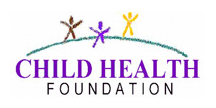While normally we expect to see a large increase in patient numbers just before the monsoon season begins, this year the Dhaka Hospital faced an earlier surge. As February drew to a close ICDDR,B began seeing large numbers of children arriving at the hospital for treatment of diarrhoea. Later testing showed that four in five children under five years had rotavirus, often considered a ‘winter’ disease, typically seen in December and January. As the increase in patient numbers continued into mid-March we began to see a change in patient demographics: more adults were arriving with a variety of diarrhoea-causing illnesses. These types of illnesses are common in Dhaka where many people, especially during hotter and drier periods, do not have access to clean water.
Although the rise in patient numbers at this time has been an unexpected turn of events, the Dhaka Hospital is more prepared than ever to handle its patient load. In the past year significant renovations have taken place within the hospital allowing us to treat larger numbers of patients than we have previously and while (until our new building is complete) ICDDR,B still erects tents outside the hospital to accommodate patient overflow, new technologies are ensuring better treatment and surveillance of patients. In fact, the Dhaka Hospital recently became one of the only paperless hospitals in the developing world: doctors and attendants now use wireless handheld PDAs, even in hastily erected tents, to record information on patient treatment and condition.
The Dhaka Hospital is committed to providing the best and most efficient treatment possible for every patient arriving at our doors but they need your help to make it happen. Donate today and be a part of a lifesaving team!
